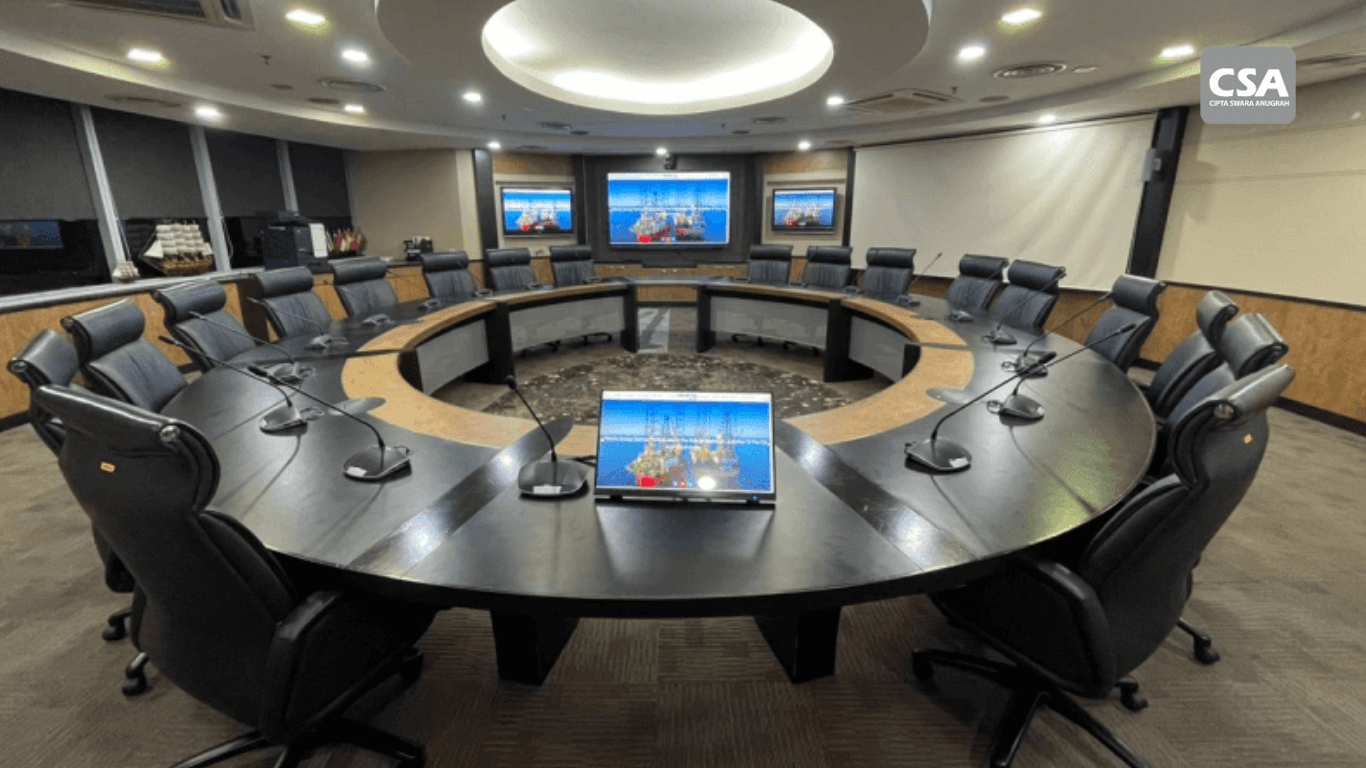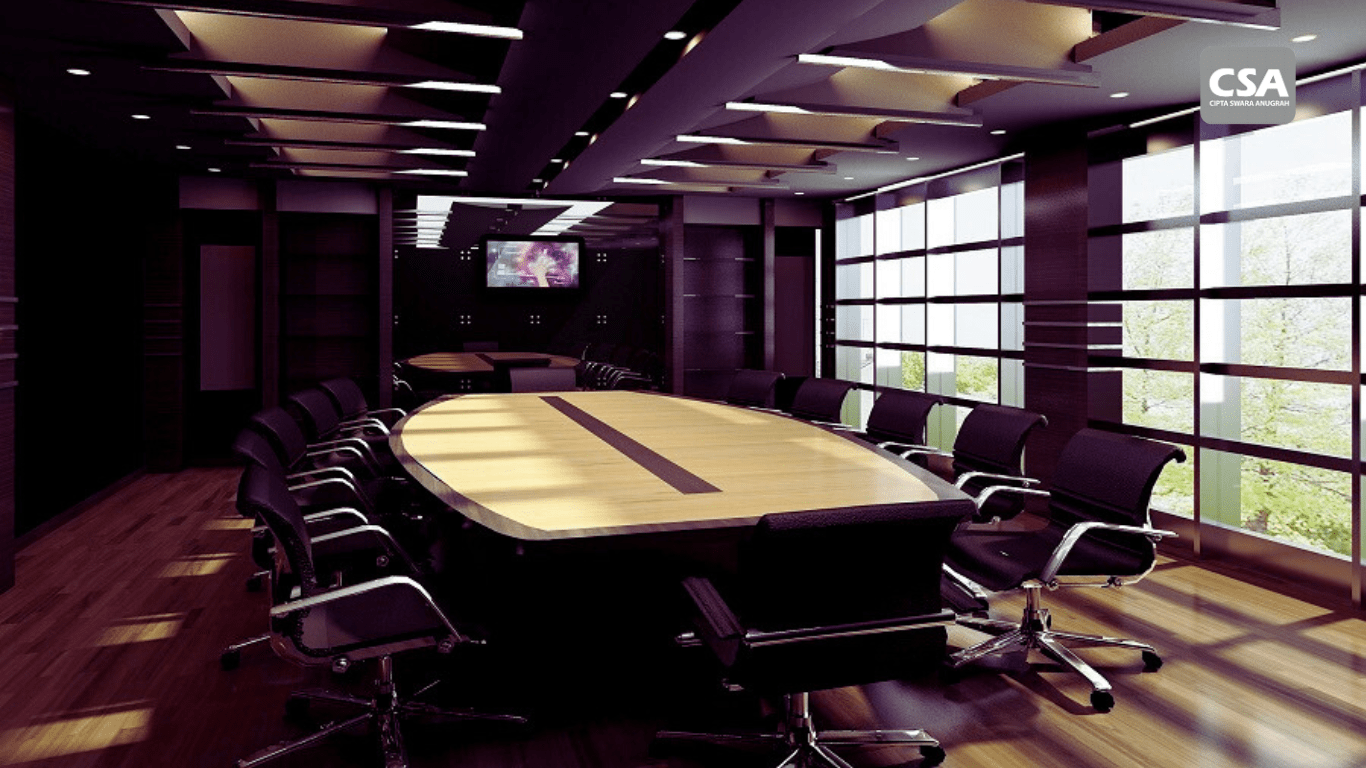In today’s era of modern office technology, communication quality has become a crucial factor in the success of every meeting. Whether in face-to-face discussions or virtual conferences, clear and reliable audio is the foundation of effective communication. This is why a Sound System Conference Room plays such a vital role in creating a seamless and professional meeting experience.
Many companies now realize that having just a microphone and speaker is not enough. A properly designed audio system is required to support various room sizes and meeting needs. This article explores how to choose, design, and optimize a Sound System Conference Room to achieve maximum results in a modern work environment.
The Importance of a Sound System Conference Room for Meetings
A Sound System Conference Room is designed to deliver clear and evenly distributed sound throughout the entire space. The system ensures that every participant can hear and speak without interference, even from a distance. In business meetings, seminars, or internal presentations, sound clarity determines how well messages are conveyed.
Without the right audio setup, participants may struggle to hear the speaker, reducing focus and discussion efficiency. Therefore, investing in a reliable conference room sound system is not an option but a necessity for today’s professional environments.
Key Components of a Sound System Conference Room
To perform optimally, a Sound System Conference Room consists of several integrated components, each playing a vital role in producing high-quality sound.

Conference Microphones
Microphones are the starting point for capturing sound. Choose a microphone type that fits the room size. For small rooms, boundary or gooseneck microphones are sufficient. Larger spaces are better suited for wireless microphones with wider coverage.
Speakers or Ceiling Speakers
Speakers distribute sound evenly throughout the room. Ceiling speakers are often preferred for their clean, space-efficient design that complements modern interiors.
Audio Processor (DSP)
This device processes the audio signal to ensure clarity and stability. A DSP eliminates background noise, adjusts automatic gain, and balances volume among participants.
Amplifier
The amplifier boosts the microphone signal before sending it to the speakers, ensuring sound is powerful and distortion-free.
Control System
A centralized control system allows users to manage all audio components from a single panel—adjusting volume, input sources, or conference modes with ease.
Tips for Choosing the Right Sound System Conference Room
Selecting a Sound System Conference Room setup requires careful consideration. Here are some essential factors to keep in mind before purchasing or installing your system:
Analyze Room Size and Acoustics
Every meeting room has different acoustic characteristics. Rooms with glass walls or hard surfaces tend to reflect sound. Use acoustic panels or absorbers to maintain clarity and reduce echo.
Opt for a Digital Audio System
Digital systems are superior because they process signals in real time while maintaining sound purity. DSP technology also allows automatic configuration without needing manual adjustments before each meeting.
Use Microphones with Noise Cancellation
Noise-canceling microphones minimize unwanted sounds like air conditioning or footsteps, helping ensure focused and professional communication.
Ensure Compatibility with Conference Platforms
Your audio system should integrate seamlessly with popular platforms such as Zoom, Microsoft Teams, or Google Meet. Plug-and-play connections save time and simplify meeting preparation.
Choose High-Quality Speakers
Speakers greatly impact sound clarity. Opt for models with a wide frequency response to reproduce human voices naturally and without distortion.
Prioritize Ease of Use
Conference room users are often non-technical staff. Make sure the system is user-friendly, featuring an intuitive control panel and simple interface.
Designing and Arranging a Sound System Conference Room
Proper layout design directly affects sound quality. Poor microphone or speaker placement can cause echo or feedback issues. Therefore, the system design must match the room’s physical conditions.
For large rooms, speakers should be installed symmetrically for even sound coverage. Tabletop or ceiling microphones can capture voices clearly without cluttering the meeting space with cables.
The setup should balance aesthetics and functionality. Many companies now prefer wireless systems to maintain a clean, professional appearance.

Read Also: Audio System Solutions for Conference Room CSA Indonesia: Smart Technology for Modern Meetings
CSA Indonesia Specialist Sound System Conference Room
Installing a Sound System Conference Room requires advanced technical expertise. Even minor mistakes in configuration or placement can significantly degrade sound quality. That’s why partnering with a trusted vendor like CSA Indonesia is a smart move.
As a specialist in Sound System Conference Rooms, CSA Indonesia provides end-to-end solutions—from needs analysis and system design to professional installation. Their experienced technical team ensures every device performs optimally, following acoustic and industry standards.
With years of expertise in Audio, Visual, Lighting, and Automation, CSA Indonesia understands the unique requirements of every meeting space—whether for multinational corporations, educational institutions, or government offices. The solutions they offer are not only functional but also aesthetically refined and efficient.
Advantages of Using a Professional Sound System
A professional Sound System Conference Room delivers numerous benefits to organizations, including:
Clear and consistent sound quality
Fewer technical disruptions during meetings
Faster and more effective communication
A more professional and modern corporate image
Improved teamwork and productivity
With a reliable audio system, messages are conveyed clearly and efficiently, enabling faster and more accurate decision-making.
Maintenance and Regular Care
To maintain peak performance, regular maintenance is crucial. Clean microphones and speakers periodically, check cable connections, and recalibrate the system every few months to ensure stable sound quality.
Professional vendors like CSA Indonesia also offer maintenance packages that include equipment inspection and software updates. This proactive approach helps prevent potential technical issues that could disrupt important meetings.
Conclusion
Building an effective Sound System Conference Room requires a balance of quality equipment, precise acoustic design, and expert installation. With proper planning, your meeting room can become a hub of clear communication and professional collaboration.
For companies seeking to create a modern work environment with top-tier audio performance, CSA Indonesia is the trusted partner to rely on. As a leader in Audio, Visual, Lighting, and Automation, CSA Indonesia delivers customized Sound System Conference Room solutions tailored to each client’s specific needs and expectations.
With the right audio system in place, every meeting runs smoothly, every word is heard clearly, and communication becomes more efficient—preparing your workspace to meet the demands of the digital communication era.
